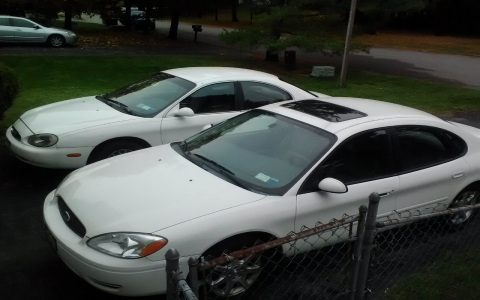Interpreting the serpentine belt routing diagram for a 2000 Ford Taurus (typically equipped with the 3.0L Vulcan or Duratec V6) requires locating the diagram and understanding its symbols.
Locating the Diagram
The most common locations are:
- A decal (sticker) on the underside of the hood, often near the latch area or on a hood brace.
- A decal on the top of the radiator fan shroud.
- Occasionally molded directly onto a plastic cover near the front of the engine.
Key Components Identified
- Crankshaft Pulley (CRK): The primary drive pulley, usually the largest and lowest pulley.
- Automatic Belt Tensioner: Typically spring-loaded. Its pulley applies constant tension. Marked with an arrow indicating the direction to release tension.
- Accessory Pulleys:
- Alternator (ALT)
- Power Steering Pump (PS)
- Air Conditioning Compressor (AC)
- Idler Pulleys (ID): Smooth pulleys guiding the belt; their count varies by engine configuration.
- Water Pump Pulley (WP): Driven directly by the belt.
Reading the Diagram
- Follow the Routing Path: Trace the illustrated belt path sequentially from the crankshaft pulley.
- Identify Symbols: Each pulley will be labeled or represented by a clear schematic symbol matching its shape and position relative to others.
- Belt Contact: Solid lines represent the grooved (ribbed) side contacting grooved accessory pulleys. Dashed lines represent the smooth backside contacting smooth idlers or the tensioner.
- Belt Direction (Crucial): Arrows on the diagram indicate the belt's rotational direction around the pulleys. Installing it backwards will cause immediate failure.
Releasing Tension & Routing
- Rotate the automatic tensioner pulley in the direction indicated by the arrow on its body (usually clockwise or counter-clockwise towards the engine) using a suitable socket/wrench on the square drive hole provided. This compresses the spring, releasing tension.
- Route the new belt exactly as shown, ensuring the ribs seat properly into all grooves. Double-check the path before releasing the tensioner slowly.
Critical Checks
- Alignment: After releasing tension, visually confirm the belt sits perfectly centered on all pulleys with no ribs hanging off edges.
- Tensioner Position: The tensioner arm should settle in the normal operating range (between the marks if visible) – not bottomed out.
- Condition: Inspect all pulleys for damage, roughness, or misalignment. Inspect the tensioner pulley bearing for wobble or noise. Replace faulty pulleys or the tensioner assembly if needed.

